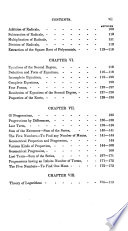 | Charles Davies - Algebra - 1842 - 284 pages
...a— b, we have (a—b)2 = (a—b) (a—b)—az~2ab+bz. That is, the square of the difference between two quantities is equal to the square of the first,...first by the second, plus the square of the second, 1. Form the square of 2a— b. We have (2a—6)2=4o2—4a6+62. 2. Form the square of 4ac—bc. We have... | |
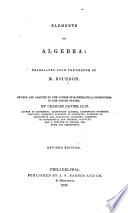 | Charles Davies - Algebra - 1842 - 368 pages
...difference, a—b, we have (a—b)2=(ab) (ai)=a 2 —2ai+i2: That is, the square of the difference between two quantities is equal to the square of the first,...first by the second, plus the square of the second. Thus, (7o 2 i2—12ai 3 ) 2 =49a 4 i 4 —168a 3 i 6 +144a 2 i 6 . 3d. Let it be required to multiply... | |
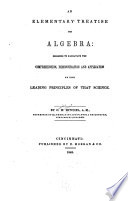 | Ormsby MacKnight Mitchel - Algebra - 1845 - 308 pages
...second. 17. Multiply a — b by a — b. The product is a2 — 2a6+62 ; from which we perceive, that the square of the difference of two quantities, is equal...first by the second, plus the square of the second. 18. Multiply a+b by a — b. The product is a2 — b2 ; whence we find, that the product of the sum,... | |
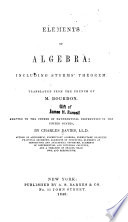 | Charles Davies - Algebra - 1845 - 382 pages
...36a862 + 108a5ft* + 81a2ft6 ; also, (8a3 + 7acb)2-. THEOREM II. The square of the difference between two quantities is equal to the square of the first, minus twice the product of the first by the tecond, plus the square of the second. Let a represent one of the quantities and b the other : then... | |
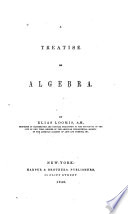 | Elias Loomis - Algebra - 1846 - 376 pages
...common mistakes of beginners is to call the square of а + b equal to a2 + 62. THEOREM II. (61.) The square of the difference of two quantities, is equal...of the first, minus twice the product of the first and second, plus the square of the second. Thus if we multiply a — b By a — b We obtain the product... | |
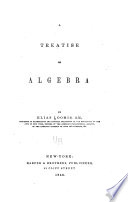 | Elias Loomis - Algebra - 1846 - 380 pages
...common mistakes of beginners is to call the square of o + b equal to a2 + 62. THEOREM II. (61.) The square of the. difference of two quantities, is equal...of the first, minus twice the product of the first and second, plus the square of the second. Thus if we multiply a — b By a — b a2—ab — ab We... | |
 | Algebra - 1847 - 408 pages
...36a»62 + 108a56* + 8 la2*6 ; also, (8a3 + 7ac6)2=. THEOREM II. The square of the difference between two quantities is equal to the square of the first,...first by the second, plus the square of the second. Let a represent one of the quantities and b the other : then a — b = their difference. Now, we have... | |
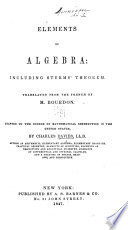 | Algebra - 1847 - 386 pages
...THEOREM II. The square of the difference between two quantities is equal to the square of the ßrst, minus twice the product of the first by the second, plus the square of the second. Let a represent one of the quantities and b the other : then a — b = their difference. Now, we have... | |
 | Joseph Ray - Algebra - 1848 - 250 pages
...a— b a2 — ab —a6+6' But a—b is the difference of the quantities a and 6; hence THEOREM II. The square of the difference of two quantities, is equal...first by the second, plus the square of the second. EXAMPLES. 1 (5— 4)2=25— 40+16=1. 2. (2a— 6)2=4a2-4a6+62. 3. (3x- 22/)2=9x2-12xy+4y2. 4. (^-y2)s=x4-2xy+/.... | |
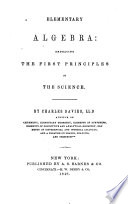 | Charles Davies - Algebra - 1848 - 300 pages
...39. To form the square of a difference a — b, we have That is, the square of the difference between two quantities is equal to the square of the first,...first by the second, plus the square of the second. 1. Form the square of 2a — b. We have (2<z — i)2 = 4a2 — 2. Form the square of 4<zc— be. We... | |
| |